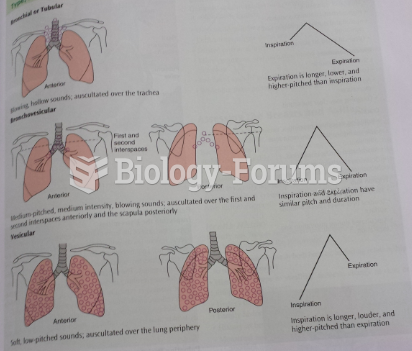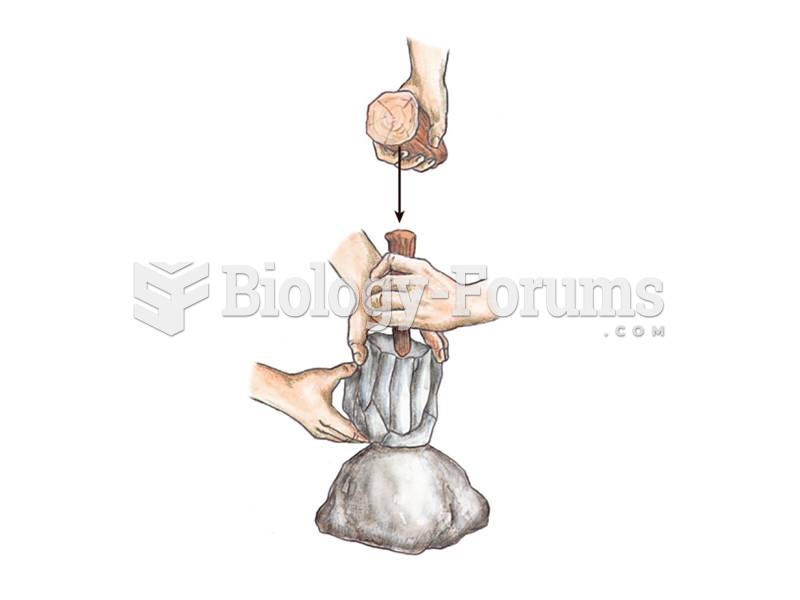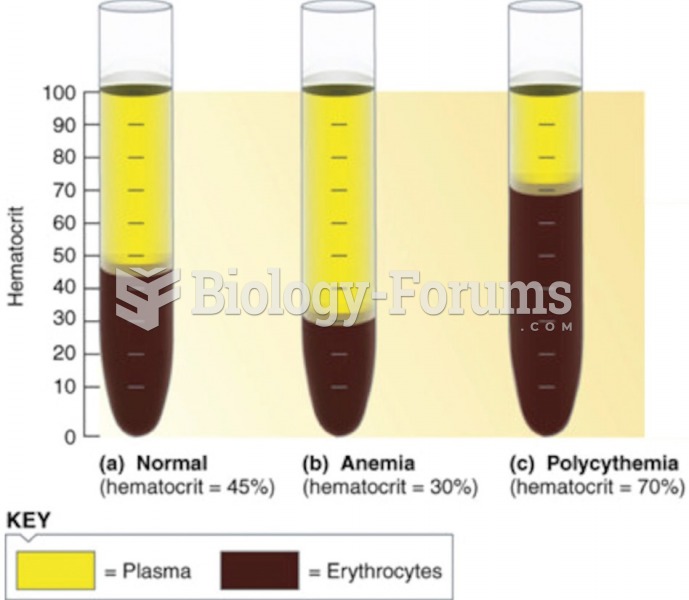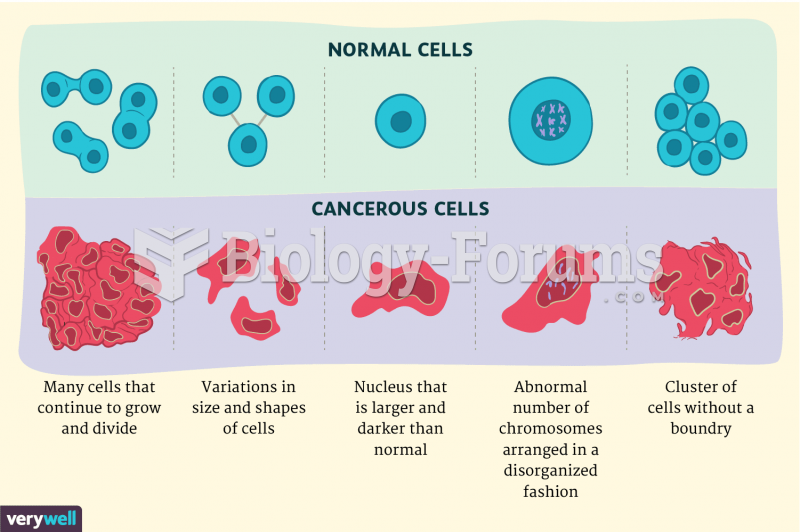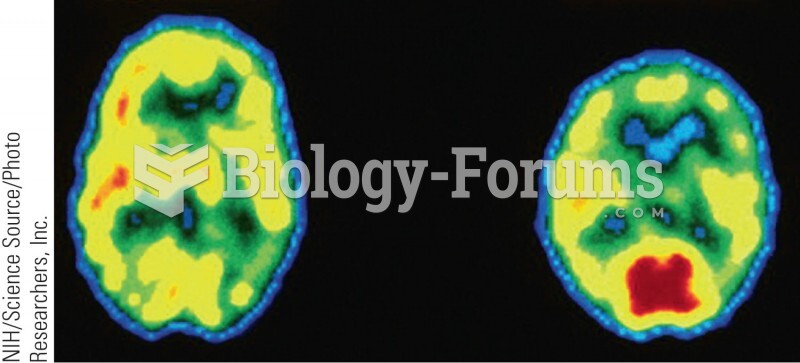|
|
|
Thyroid conditions may make getting pregnant impossible.
Dogs have been used in studies to detect various cancers in human subjects. They have been trained to sniff breath samples from humans that were collected by having them breathe into special tubes. These people included 55 lung cancer patients, 31 breast cancer patients, and 83 cancer-free patients. The dogs detected 54 of the 55 lung cancer patients as having cancer, detected 28 of the 31 breast cancer patients, and gave only three false-positive results (detecting cancer in people who didn't have it).
In 1844, Charles Goodyear obtained the first patent for a rubber condom.
People with high total cholesterol have about two times the risk for heart disease as people with ideal levels.
It is difficult to obtain enough calcium without consuming milk or other dairy foods.



